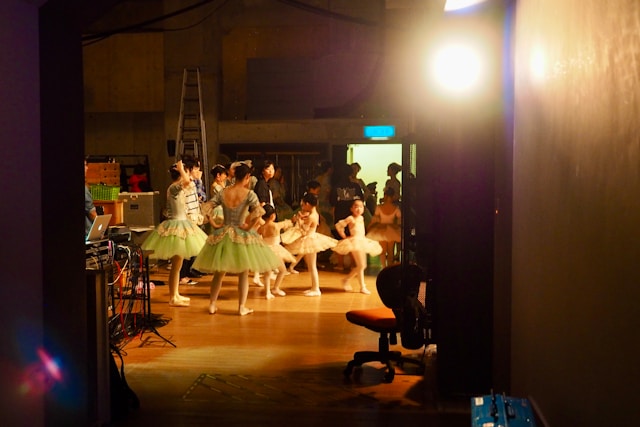Imagine being able to reverse-engineer the future — not just guess where you’ll end up, but decide where you want to be and then figure out exactly how to get there. That’s the magic of a Back Casting Room. Unlike traditional meeting rooms filled with spreadsheets, sticky notes, and short-term planning, this room is designed for bold ideas, long-term visioning, and serious innovation.
Let’s dive into why the back casting room is the secret weapon of forward-thinking organizations.
What is a Back Casting Room?
At its core, a Back Casting Room is a specially equipped space where strategic planning happens backward. Instead of starting from the present and forecasting forward, it starts with the future you want and works backward to figure out the steps to get there.
It’s not just a physical room — it’s a mindset shift. It’s where goals are dreamt up, timelines are reversed, and innovation takes a front-row seat.
Why It’s More Than Just a Buzzword
Let’s face it — the business world is drowning in jargon. But this isn’t one of those overused, underdelivered terms. A back casting room is a game-changer for organizations that want to shape the future, not just react to it.
Understanding Backcasting
Definition and Origin
Backcasting originated in sustainability planning, but its reach has expanded into corporate strategy, tech development, and even education. It’s about setting a desirable future and asking, “What must happen to make that future a reality?”
Backcasting vs. Forecasting: What’s the Difference?
While forecasting predicts what will happen based on current trends, backcasting imagines what should happen, then maps the steps in reverse. Forecasting is like sailing with the wind — backcasting is building the boat to go wherever you want.
The Purpose of a Back Casting Room
Think of it as a mission control center for the future. This room is where:
-
Bold strategies are born.
-
Long-term goals are clarified.
-
Collaboration thrives in a focused environment.
It’s part strategy lab, part think tank, and 100% future-focused.
Key Components of a Back Casting Room
Creating this space isn’t just about whiteboards and comfy chairs. It’s about integrating tools that support creative thinking and reverse planning.
Interactive Whiteboards and Digital Displays
These tools let teams sketch visions, outline roadmaps, and engage visually with ideas.
AI and Data-Driven Tools
AI helps simulate scenarios, analyze data trends, and make projections more accurate.
Scenario Mapping Technologies
Software like Miro, Lucidchart, and custom-built apps help visualize multiple paths from future to present.
Real-Time Collaboration Tools
Cloud-based platforms like Notion, Figma, or Monday.com help teams ideate and iterate — whether remote or in person.
How a Back Casting Room Works
Let’s break down the workflow inside a back casting room.
1. Define the Vision
Start by asking, Where do we want to be in 5, 10, or even 50 years?
2. Set Milestones Backward
What needs to happen one year before that vision is achieved? Then another year before that? Keep going backward.
3. Identify Obstacles and Resources
What could stop you? What resources will you need? Map it all out.
4. Implement and Iterate
Now turn the reversed timeline into action steps and keep refining.
Industries Using Back Casting Rooms
It’s not just for Fortune 500s. Organizations across sectors use backcasting:
-
Tech companies design product roadmaps.
-
Governments use it for climate planning.
-
Startups use it to pitch bold business plans.
-
R&D departments apply it for futuristic innovations.
Benefits of Back Casting Rooms
The advantages go beyond productivity:
-
Vision clarity: Everyone aligns around a shared, long-term goal.
-
Better decisions: Planning backward reveals blind spots.
-
Creativity boost: Thinking outside the box becomes the default.
Challenges and Limitations
Nothing’s perfect, right?
-
Initial setup costs can be steep.
-
Change resistance among team members is real.
-
Tech reliability can make or break a session.
But these are bumps, not barriers.
Setting Up a Back Casting Room
Space Requirements
Think open layouts with smart boards, flexible seating, and zero distractions.
Essential Equipment
-
Large touchscreens
-
High-speed internet
-
Cloud-connected tools
Team Roles
Assign facilitators, visual thinkers, data analysts, and a “future visionary” to guide the room.
Tips for an Effective Backcasting Session
-
Invite diverse minds — engineers, creatives, marketers — everyone.
-
Keep the vision BIG but clear.
-
Visualize everything — the more maps, the better.
-
Challenge assumptions — constantly.
Backcasting and Sustainability
Originally used in environmental planning, backcasting helps:
-
Design carbon-neutral strategies
-
Plan sustainable city infrastructures
-
Build eco-conscious brands
If we want a livable future, we need rooms where people plan it.
Real-World Examples
Tesla
Their electric car roadmap was backcast from a future without fossil fuel reliance. Every model release was a backward step from that dream.
Stockholm’s Climate Plan
The city used backcasting to become fossil fuel-free by 2040 — mapping policy and infrastructure needs in reverse.
The Future of Back Casting Rooms
Hold tight — things are just getting started.
VR Integration
Imagine walking through your future company in virtual reality. Now that’s vision planning.
AI-Powered Simulations
Backcasting with real-time outcomes prediction? Yes, please.
Back Casting Room vs. War Room
The war room is for crisis and immediate action. The back casting room is for building a peaceful, powerful future. One handles emergencies — the other handles destinies.
Conclusion
The back casting room isn’t just a fancy space — it’s a mindset revolution. It flips planning on its head and hands you the wheel to steer toward the future you actually want. Whether you’re solving climate change or launching your next big product, this is where the future is built — one backward step at a time.
FAQs
1. What’s the main goal of a back casting room?
To reverse-engineer a desired future by creating a plan backward from that goal.
2. How is it different from a traditional meeting room?
Traditional rooms focus on current problems; back casting rooms focus on future possibilities.
3. Can small businesses use backcasting?
Absolutely. Even with limited resources, planning backward helps prioritize what matters most.
4. What tech is essential for a back casting room?
Smartboards, cloud tools, AI platforms, and scenario modeling software are key.
5. Is it worth investing in one for future planning?
Yes — especially if your organization values innovation, sustainability, and long-term growth.


